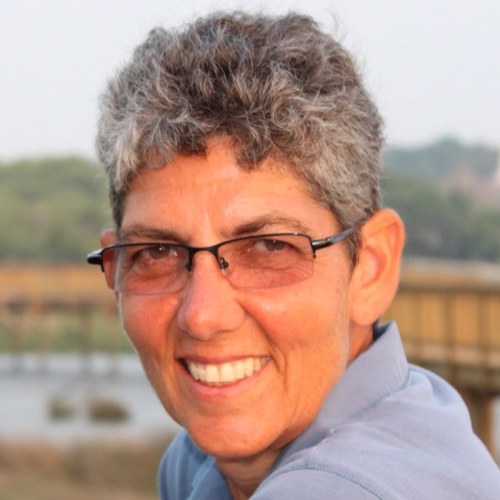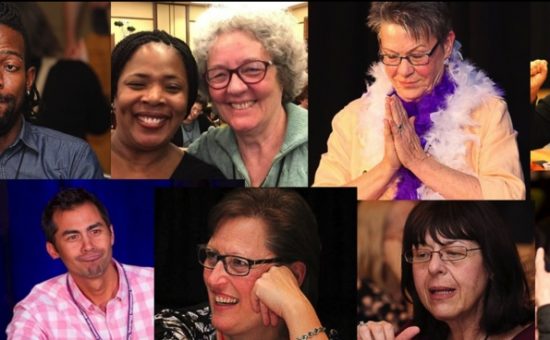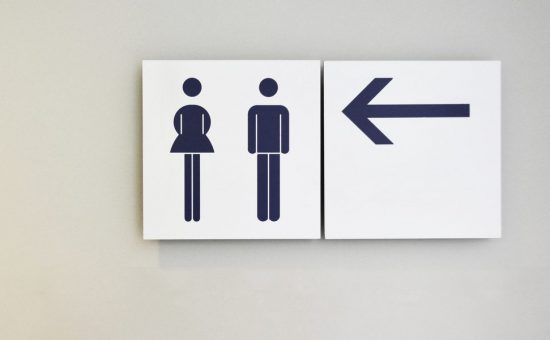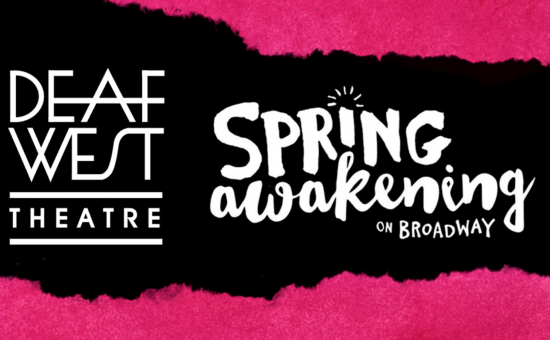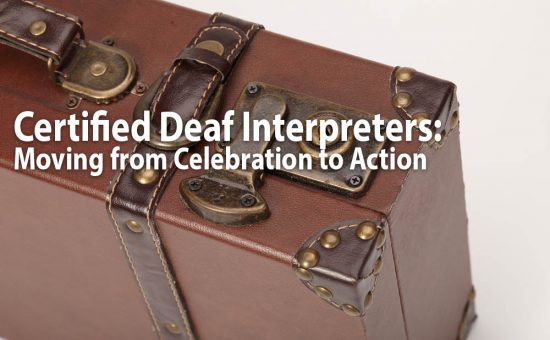Bridge to Allyship: Understanding Accountability as Sign Language Interpreters
MJ Bienvenu presented Bridge to Allyship: Understanding Accountability as Sign Language Interpreters at StreetLeverage – Live 2016 | Fremont. Her presentation explores accountability and its relationship to being an ally versus calling ourselves allies.
You can find the PPT deck for her presentation here.
[Note from StreetLeverage: What follows is an English translation of MJ’s StreetLeverage – Live 2016 presentation. We would encourage each of you to watch the video and access MJ’s original presentation directly.]
If you enjoy this presentation and accompanying article, consider going to StreetLeverage – Live.
Bridge to Allyship: Understanding Accountability as Sign Language Interpreters
Good morning, everyone. Although all I can see are the lights onstage and my body clock says it is afternoon, it’s still “good morning.” So, I say again, good morning, everyone.
By way of a brief explanation, I have my laptop and powerpoint here at the podium, and the StreetLeverage tech team is running it from the back of the room so you all can see it. We’ll be working in tandem to ensure a seamless presentation today.
Also, I want to offer my sincere thanks to Dennis Cokely and Brandon Arthur for making it possible for me to be here today. When they asked me to present, and I agreed, it took some efforting for them to make it happen. Thank you, both. I can’t see you with the stage lights shining. Thank you.
Today, I want to look at accountability, boundaries, and allyship as concepts. I’d also like to explore how we navigate these concepts.
Introduction
First, we’ll consider “accountability.” When we use that term, we typically use a sign which, in my education and experience, means “responsibility.” Interesting, right? So, when I see the term “accountability,” it gives me pause because the two terms are often used to define each other. It would seem, then, that the interchangeable nature of these terms means utilizing a single sign for both is acceptable. It doesn’t seem that we need to delve into a discussion to define “accountability.” Next, let’s look at “boundaries.” How do we define boundaries? Where are those lines drawn? Even the sign we use to mean boundaries, which looks like physically “drawing a line,” doesn’t convey a concrete meaning. Finally, we have the term “allyship.” Upon further examination, we have to ask: Is allyship a process or an identity? These are the ideas I’ll be exploring with you this morning.
Interpreters In General
If we are talking about interpreters in the broadest sense, we can look at where they are accountable in the context of their day-to-day work. Typically, interpreters are accountable for everything from the moment they are contacted for a job through preparation, the actual assignment, their relationship with the communities they serve, etc. Interpreters also have to look at their own levels of accountability – what they consider a part of the job they perform.
Most interpreters – I don’t think we can say all – but most interpreters have some level of training that they have incorporated into their practice. It is important that while this may be true, it is also true that their training is superficial, at best. Their training does not delve into the complexities of the work. The intention of most training is to ensure practitioners are capable of doing the deep analysis on their own. This includes developing and understanding all the ways they are accountable in their work.
ASL/English Interpreters
Let’s narrow the scope slightly, now. Interpreting, in general, is quite broad and encompasses many contexts, though my slide lists just a few. I’ll first address ASL/English interpreting in a platform setting.
Platform Interpreting
Let’s look at what platform interpreters are responsible for when they take the stage to work. Typically, platform interpreting means the information moves one way – from the presenter to the audience via the sign language interpreter. When a platform interpreter receives unfamiliar or unclear message information, particularly when the interpreter is working from English-to-ASL, is the onus on the interpreter to interrupt the speaker to request clarification? In these circumstances, the interpreter will usually use their clozure skills to “do their best” to get through it to provide some level of interpretation. Some interpreters, when faced with a fast-paced, challenging speaker, abandon processing for meaning. Target interpretations lose the mindfulness and evidence of concept building and become instead a data dump gone haywire. Or, under the same demands, an interpreter’s processing may slow to a crawl in the struggle to find meaningful pieces of information they can interpret.
The same phenomenon holds true when the roles are reversed, and the presenter is using ASL with interpreters on microphone working into English. I’ll admit that it’s a pet peeve of mine when sign language interpreters ask me, as the presenter, to fingerspell more slowly. As a presenter, I produce the language I’m using at my usual pace with the expectation that the interpreters will hold up their end: to find meaning from ASL to English at an appropriate pace, just the same way they do when interpreting for a presenter who uses English. Accountability to the interpreting task does not diminish depending on the target language.
In the same way that it is not always appropriate to stop a speaker using English in a platform situation, so too, the interpreters must find a way to work through the challenges presented by a platform ASL interpreting assignment. Several days ago, I was scheduled to give a presentation at California State University at Northridge (CSUN). As I worked with the interpreters before the presentation, they asked me my preferences for handling missed information and clarifications during the presentation. After some consideration, I shared my preference for them to reserve interruptions for moments where they felt they were completely unable to convey meaning. In other situations, where meaning could be determined through context, they should proceed without interrupting the flow of the presentation. What I know is that people, regardless of language or modality, may miss information during a presentation, so this is not a huge issue to me. Obviously, if there is a huge omission, the interpreters need to take ownership to repair the message, even if it means stopping the speaker to get clarification. That’s one way that accountability is played out in platform interpreting.
Legal Settings
Interpreting in legal setting carries a completely different level of responsibility. Legal situations could have life-altering consequences. Certainly, there are training and learning opportunities related to legal settings, and yet, there are situations that present themselves as seemingly inconsequential or easily dismissed in terms of legal significance. I would question whether “minor” legal situations exist where interpreters would find themselves. When we juxtapose what is seen as a less significant assignment with courtroom situations which have clear life and death consequences, sign language interpreters have an obligation to ensure that they are ready to take on such a weighty task. This extends to the plaintiff and defendant alike- and should be taken with the utmost gravity.
Medical Settings
Medical situations also often entail life-altering information, and yet it has somehow become commonplace to only approximate an interpretation via lengthy, inaccessible fingerspelling of medications and other jargon. A Deaf consumer is then faced with having to decode what is no more than the equivalent of spoken English- therefore rendering an interpreter moot. Even in a spoken English to spoken English situation, a lay person does not always have complete understanding of the medical jargon used by professionals. In general, patients are often intimidated by medical professionals. As interpreters, how do we function to mediate in that context? Do we merely express back to the healthcare provider that the patient does not understand what is being said? Or do we take it upon ourselves to clarify with the provider in order to render a complete interpretation? Again, this is no small task.
Video Relay Service
This brings me to Video Relay Service interpreting. Though VRS is no longer considered a novel technology, as a phenomenon, it is still new in another sense of the word. Interpreting in the VRS industry hearkens to assembly-line models, where interpreters may process countless calls day in and day out. It is likely that Deaf consumers will never actually see the hearing people with whom they’re interacting through the relay. It is also possible that many of the hearing people who find themselves in a relay call have little to no awareness of the fact that Deaf people exist in the world, much less how to interact with them. Whose responsibility is it then to ensure a clear, accurate communication experience on the phone?
Deaf Community
From a Deaf consumer’s perspective, added layers and demands surface when conducting business on the phone through an interpreter. A comprehensive conversation with a hearing attorney, for example, can be derailed if, upon a second consultation, communication occurs through a different interpreter. The same information couched in a different gender, age, vocabulary choice or delivery could be puzzling to the hearing party and undermine the rapport previously established. The responsibility to protect against unintended negative consequences from communicating under different representations seemingly falls to the Deaf consumer.
Without question, the Deaf community and interpreting community are linked through service provision. But what does that linkage imply for the relationship between us? Is the Deaf community to reach out to and bolster the interpreting community? Or should interpreters take the first step? As Pamela mentioned in her presentation – when we collectively acknowledge that, “Houston, we have a problem,” how can we remediate the growing gap between our communities? How do we come together for resolution?
As an aside – I realize I hadn’t referred to the slide in my presentation. That’s on me, not on our Tech Support team. I forgot to direct them back to the powerpoint earlier.
Linguists/Teachers
I want to take a moment to share some thoughts about the jobs of linguists versus teachers. You know, it’s interesting: linguists describe how language behaves- whereas teachers dictate how language should be used. Not always a seamless pairing! Given the cursory training that so often happens in interpreter education programs, the friction between camps in approach to language can muddy the interpreting waters to an even greater degree. The important thing to remember is that education merely provides the tools for success; the outcome depends on how much one decides to leverage what’s been made available to them.
Consumers
The term “consumer” connotes one who brings no knowledge to bear on a situation they find themselves in- whether it be knowledge of the Deaf community, language, interpreters, etc. In such situations, there needs to be accountability as to who will provide the necessary, and sometimes lengthy, education. It would do well to remember the role that interpreter referral agencies play, and the often unrealized charge that schedulers take on when filling assignments. Tonight, Aaron Brace and I will be digging deeper into the ins and out of accountability. We’ll all be working together to explore this topic further.
Boundaries
Boundaries are an ever-elusive component in the interpreter-Deaf community relationship. Just when it seems we have figured out where we stand in relation to those with whom we work, the situation may abruptly change, and we find ourselves snapped as from a rubber band back to the drawing board. Finding the appropriate space in which to operate professionally can be enigmatic and not a little bit painful in the processing of discerning it.
Boundaries in psychological space are more conversations than hard lines in the sand. They are constantly being negotiated on a case by case basis, and the job of interpreters is to develop the skill and flexibility of finding the right balance as the situation calls for it. They are governed by both the interpreter and consumer, are subject to trial and error, and ideally become agreed upon by all parties.
It’s important to remember that interpreters work within and among a culturally collectivist community. We need to consider the impact of individuals when navigating in that space. For those hearing interpreters puzzled or dismayed at the way others may seem to more freely navigate that community- for example, CODAs- keep in mind that everyone’s association is a product of their unique experience, growth, and journey.
Allyship
I want to emphasize the use of the word “allyship”- not “ally,” the noun. Allyship is not an easy road. It’s not a destination. It is a process. A process that happens day by day. Allyship and the word “ally” are nouns, but the act of being an ally, the verb, is what’s crucial. Allyship is much like the concept of boundaries in that it is dynamic and based on the daily occurrences that shape our interactions. We incorporate feedback from the community and modify our assertions of self every day.
Region 1 Conference in NH
To share a bit of history- there was an incident in the 1990s in Philadelphia that led to the development and hosting of an “ally” conference in New Hampshire. Attendees were mostly those who had an academic understanding of the concept but lacked an in-depth knowledge and experience of how it applies to interpreting. Discussions were lengthy, involving Deaf and hearing stakeholders, CODAs, and interpreters. I believe it was it 1994, or 1995. For some, the experience was eye-opening, even deeply emotional, to come to an understanding of how they and their roles fit into the bigger picture of the Deaf community and interpreting. A similar event happened later in Pittsburgh. But since then it’s been radio silence. If allyship is truly lived 24/7, our community needs a better understanding of what that means.
Understanding Allyship and Application
When we look at allyship in application, it becomes clear that we are talking about a verb. It is never latent. In my daily life, I must acknowledge the privilege society grants me as a White person over people of color. In that recognition is not a call for me to surrender my privilege, rather, to explore how we can work together to create shared equity among us as peers. I cannot make the blanket statement that I am a self-proclaimed ally for the Black community. Like any community, they are diverse in their worldviews and would understandably also be in their decision to either accept or reject White allies. The same thing applies to sign language interpreters’ allyship negotiation.
In all honesty, StreetLeverage is one of my favorite events to attend because of one thing: the commitment to growth I see in attendees as valued through their decision to sign at all times. It is a communication environment to which I have full access.
I recently experienced something at work that I’d like to share. I happened to be in a meeting with another woman- hearing, and a competent signer. At one point another hearing person needed to speak with her in an aside. The first woman agreed and brought an interpreter with her. The second person was confused- why would an interpreter be necessary when both parties knew and could speak in English? The first woman explained that at Gallaudet University, it was crucial that all communication be accessible. This situation could have easily taken the path of least resistance. But, by having the conversation interpreted, learning occurred, both direct and incidental, that would not have been possible in an English-only conversation.These are the kinds of situations where hearing signers can act in allyship – using ASL to allow for access, whether by policy or practice. I highly encourage places where hearing signers converge such as RID, CIT, and of course, StreetLeverage, to continue to practice accessible, signed communication for the understanding, inclusion, and participation of all.
Are We Allies or Are We Not?
Again, it’s not about asking the question “Am I an ally yet?” It’s about accepting the process for what it is- the effort, the analysis, and ideally, the development that comes with it. Ask instead “How have my behaviors today reflected allyship? Have I worked to partner with the Deaf community in a supportive and equitable way, or did I just phone it in?” There is no vacation leave in the work of allyship.
I’d like to share a framework to demonstrate how I’d envision the interrelatedness of boundaries, accountability, and allyship. With a solid understanding of accountability come well-tuned boundaries, which then lead to allyship practices. Of course, this model leaves room for revisiting and refining each step of the process in accordance with feedback and growth in partnership with the Deaf community. In understanding each concept, there is a need to constantly reevaluate, particularly in the face of challenges. As we take a step back to look at our accountability and our boundaries, our learning deepens, and we can reflect on the challenges and successes that inform our path forward. This looping is a critical part of the process. There will likely be moments of doubt or insecurity. That is natural. Remember – this is a process. The ASL sign for the concept “process” conveys this idea perfectly. The sign moves forward but also incorporates a circular motion. This model is a process which involves forward movement as well as returning to reflect on the journey before moving forward again.
In Closing
In closing, I want to reiterate that regardless of the role we play, we have all taken on a mantle of accountability as interpreters. In any situation, we must utilize the teaching and tools we’ve been given in order to successfully navigate our roles and to maintain boundaries that align with each dynamic situation we enter. This process of reflecting, revisiting, and revising our behavior is all part of the process of acting in allyship. This framework provides the basic foundation for understanding accountability and boundaries as bridges to allyship.
And, the clock says I’ve finished right on time. Thank you.

